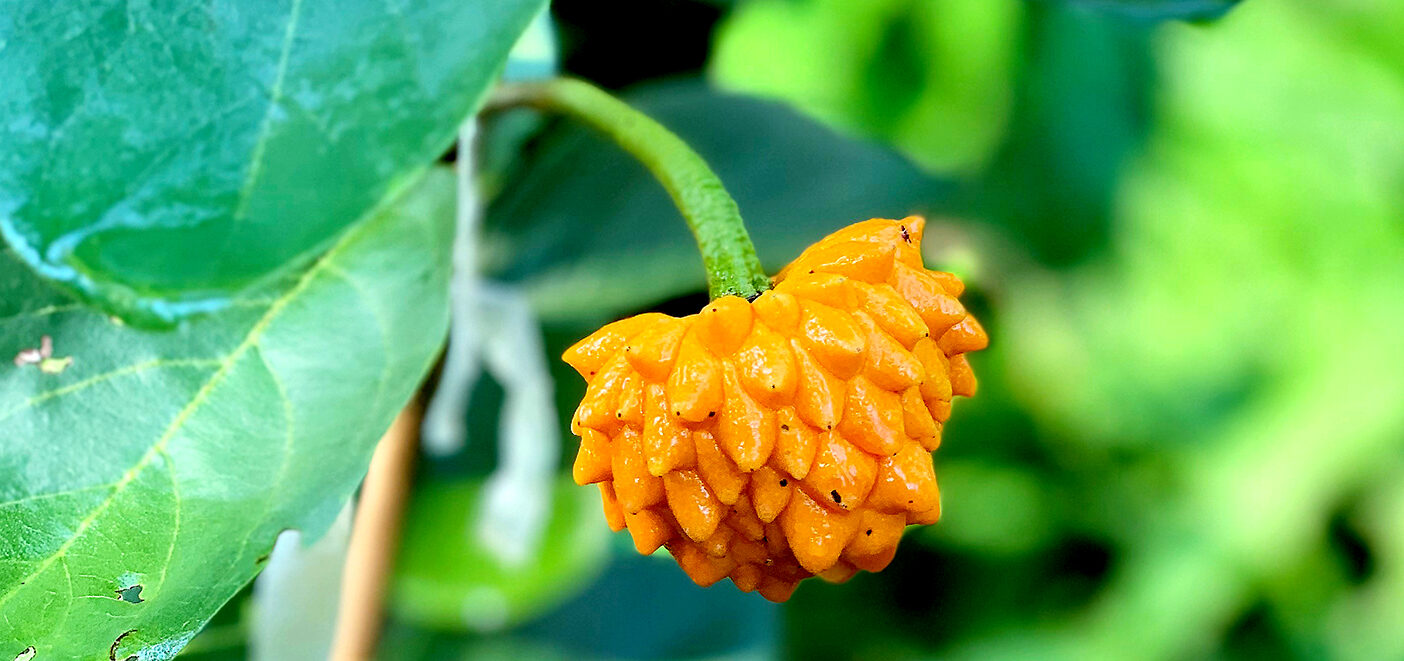
They say “smell” is the most powerful of senses, the one that can whisk you through time or transport you to another place, trigger your appetite, or, conversely, make your stomach churn.
So I guess it makes sense that when I step into the Garden, I notice fragrance first: the sugary sweetness permeating the walkway by my office; the trace of pepper hitting my nostrils near the Kapnick Caribbean Garden, the freshness of the Karen and Robert Scott Florida Garden, like newly cut grass.
If I were an experienced Garden staffer, I’d tell you the plants releasing each fragrance—in common vernacular and botanical Latin—but I’ll confess to you, in this debut post of our Garden blog, I’m new to this world. My career has been spent in newspapers and magazines, with a bit of teaching thrown in the mix. I joined the Garden over the summer, as editorial director, charged with sharing the workings of this place with the wider world. I envision this blog as a chronicle of my discoveries, a chance to share what I learn with you, or a space where my colleagues might bestow their knowledge on you and me together.
I first encountered the Garden as a reporter in the wake of Hurricane Irma. I’d come to see the devastation and then to track the recovery effort, expecting to focus on actions like debris removal, replanting, and restoring what the winds had wrecked. I knew the Garden then as many visitors know it: A beautiful place to walk and connect with nature. But I quickly discovered how much more unfolds here—the work of conservation, the push to preserve biodiversity, the art of curating a collection of plants, the science behind growing something from seed or cutting or root. I learned a lot in writing that piece (you can read it here), but now that I’m on staff, I’m realizing that my reporting had given me only a mere glimpse of the stories embedded in this place.
Walk with me, and I’ll show you what I mean.
I find horticulturist Erica Klopf crouched in a bed of plants.
“Do you want to see the tree I was telling you about?” she invites. We’d spoken a few days before about a hybridization experiment. She leads me to a slender Annona cornifolia (pictured above), a rare tropical fruit tree originating in Brazil that produces a blood-red fruit. In collaboration with FruitScapes, a tropical fruit nursery on Pine Island, she’s trying to hybridize it with the Annona spraguei, a tree from the same family originating in Panama that flaunts long hairs on its fruit. “I’ve never seen it in person; they’re that rare,” Erica says of the spraguei. “We’re hybridizing obscure species of Annona.”
She and her collaborator from FruitScapes will take the seeds, plant them, wait 18 months for them to germinate, and wait another three years for the fruit. Each tree will be as different from each other as siblings in a family. Erica will look to see which produce the most desirable attributes in measures such as taste, heat tolerance, and drought resistance.
Intrigued? Me, too. We’ll check back with Erica periodically. In the meantime, there’s more to discover on this morning’s walk.

A few paces away, I find Amanda Packard, another member of our Horticulture team, snapping a quick photo of a big, showy flower in full bloom.
“What is that?” I ask. “Oh, you don’t know about this tree?” she replies. I reiterate what I confessed to you at the start—I really am starting from scratch.
“So this is called the cannonball tree,” she begins, more than happy to tell me Couroupita guianensis’ tale, “and it is one of the coolest trees we have. The fruits look just like cannonballs.” Later, I look up photos, and she’s right: The brownish fruits that the tree will produce do indeed mimic the size and shape of said munitions. Notably, the tree is planted a safe distance from the footpath; Amanda suspects a falling fruit could pack a wallop.
“The flowers are absolutely beautiful,” she continues, the reason she’d stopped to photograph the showy bloom. “We do have one other in Kathryn’s Garden up near the front, but it is a pretty rare tree. It does quite well here, so it’s fun to point it out to guests.”
These are the things I look forward to—learning about the rare plants on display here and learning to see … I mean really see the details embedded in our 170 acres.
I continue along the path, finding Sandra Rigotti-Santos, the curator of records, who is carefully labeling and recording all the new plantings the Horticulture staff has installed. She’ll enter them into a database. I can’t fathom what it takes to track all that’s growing in our Garden, but she promises to show me one day, and when she does, I’ll show you.
I’m so glad you joined me on this Garden excursion, the first of many, I promise. Please visit this spot regularly for ongoing botanical adventures.
 About the Author
About the Author
Jennifer Reed is the Garden’s Editorial Director and a longtime Southwest Florida journalist.

